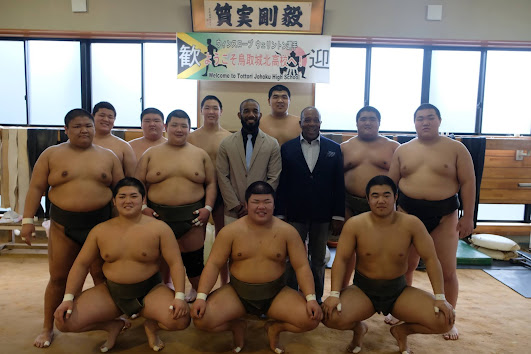Japan's Representative Food
Quick question: what food do you imagine when you hear "Japan"? If
you answered "why, sushi of course!" as mostly everyone to whom this
question is posed do, then I'll pursue the matter further with a follow-up
question: what food besides sushi do you imagine when you hear
"Japan"?
Allow me to presume that your answer includes noodles; if not,
please take a moment to let me know what non-noodle dish represents Japan for
you in the comments and, for the time being, pretend. Before proceeding any
further, I should confirm that, despite a veritable cornucopia of noodle dishes
in Japan, we all agree that there can be only one noodle to represent Japan,
and that it must be made from the buckwheat that the Japanese have been
producing since even before the Nara period (710 - 794) to nutritionally
compliment their staple food of white rice, and that all of the newcomers and
flashy upstarts such as yakisoba, champon, ramen, and tsukemen should hereafter
only receive the tepid consideration reserved for distant relations of the
fabulously successful. So, of course, we agree that soba reigns supreme.
Maybe not the prettiest, but a very special soba...
Go to the Dojo
Now that we've settled on Japan's other most representative food, let's imagine
someone close to you - say, for the sake of argument, your immediate supervisor
- told you to go and pound soba, where would you start? No - no reason for
anger: telling someone to go pound soba is not a rebuke; in Japanese, the verb
used is "打つ", which means "to hit", and strikes me as far more
apt a description for the actions involved in the process. But I
digress.
First, make an appointment to receive training from a soba
master at the Shikano Soba Dojo.
The lesson fee is \110 per person, but individuals and groups alike must also
pay a set fee of \2,860 for ingredients to make soba for four, so it's best to
bring a few friends along to split this and the resulting food.
Next, travel to the locality of Shikano in Tottori city. As always, I recommend riding a bicycle, but there is also a bus to Shikano from Hamamura Station (access details here). Once there, change into a soba making gi, wash your hands, and do a few warm-up stretches.
Soba punching gi (apron) provided for use by the Dojo
Pound Soba
The Dojo uses buckwheat flour grown locally in Shikano. Soba-beating black
belts can pound out ju-wari (literally "100%") soba using only this
buckwheat flour; however, due to its dry, crumbly consistency, white belts will
find themselves punching above their weight. Therefore, wheat flour is mixed in
as a form of edible glue to make hachi-wari (literally "80%) soba.
Training begins with an easy warmup of dumping buckwheat and wheat flour together in a huge wooden mixing bowl. Next, add in water while mixing with by hand as the aroma of buckwheat flour fills the room. After all of the water has been added and the dough formed, knead the soba dough by rolling it around the edge of the bowl until it becomes smooth and glossy.
I received plenty of help and learned techniques from a local expert, though I did think the tables a little short for the vertically endowed.
After kneading out all of the cracks and dents, the real workout begins: put the dough on the table and then squish it into a disc of 20 cm in diameter. Next, take the large wooden roller in hand and stretch out the dough using the traditional technique: start in the middle, push the roller in one long continuous stroke and slide hands from the middle to the edges of the roller, repeat 3 times, and then change the direction of the dough. Continue until the dough reaches about 40 cm in diameter.
Now comes the part where the choice of verb starts making sense: wrap the dough around the roller and then firmly slap the edges of the dough to flatten and unroll it. These palm strikes require accuracy, strength, and enough endurance to persevere until the dough reaches a uniform thickness of 2 mm.
Weapons Training
Next, position a wooden straightedge atop the folded dough near the edge and, with the left hand, press it down with just enough strength to keep it stationary while not squishing the dough; with the right hand, aim a soba-kiri knife at the sliver of soba dough jutting out from underneath the straightedge.
The goal is to cut noodles with a uniform thickness of 2mm, and
this is done by using the straightedge as a guide for inserting the blade,
slicing back, and then tilting the blade to push the straightedge back 2 mm in
preparation for the next cut.
Japanese tamahagane breezes through soba dough
Results may vary. Even though my first cuts resulted in
extra-thick noodles, after much practice, I began to cut, slice, and tilt to
such a regular rhythm that I felt like I'd become a soba
artisan.
It’s Better to
Share
The taste of noodles freshly made by my own hand, I'm sure, is fantastic. But I wouldn't know. The sight of soba of such diverse shape and size beat and cut by my coworker proved irresistible, and was delicious. In turn, he ate all of my noodles in a breathless race without even looking up.
A highly memorable lunchtime adventure





















